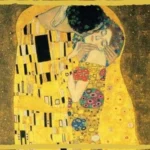
Guernica is a painting created by Pablo Picasso in 1937. It is widely considered one of the most powerful anti-war statements in the history of art. The painting was created in response to the bombing of Guernica, a Basque Country town, during the Spanish Civil War. Its emotional power and symbolism have made it an enduring symbol of the horrors of war.
The painting measures 11 feet 6 inches tall by 25 feet 6 inches wide. It is a large, imposing work that demands attention. The black and white color scheme, with touches of gray, gives the painting a stark and dramatic quality. The distorted and abstracted figures and objects in the painting make it difficult to discern what they are, adding to its sense of chaos and confusion.
Guernica was completed in just five weeks. This was a remarkable feat, considering the size and complexity of the painting. Picasso worked tirelessly in his studio in Paris to complete the work in time for the 1937 World’s Fair in Paris. The painting was first exhibited in the Spanish Pavilion at the fair and has been a cultural landmark ever since.
The painting is considered one of the most famous paintings of the 20th century. Its powerful imagery and emotional impact have made it an enduring symbol of the horrors of war. It has been studied, analyzed, and interpreted countless times over the years. The painting has become a cultural touchstone and an inspiration for countless other works of art.
The painting features a number of symbolic images, including a bull, a horse, and a mother holding a dead child. The bull is often interpreted as a symbol of brutality and aggression. The horse is often interpreted as a symbol of the people of Guernica. The woman holding the dead child is often interpreted as a symbol of motherhood and the innocent victims of war. These images and symbols give the painting its emotional power and resonance.
Guernica has been on display at the Museo Reina Sofía in Madrid since 1992. The painting is one of the museum’s most popular attractions and draws visitors from around the world. The museum has taken great care to preserve the painting and ensure that it remains in excellent condition for future generations to enjoy.
The painting has been the subject of many interpretations and analyses over the years. It has been praised for its emotional power and criticized for its political message. The painting is seen by some as a condemnation of fascism and war, while others see it as a more abstract expression of human suffering and tragedy. The painting’s ambiguity and complexity have made it a fascinating subject for scholars and art lovers alike.
The painting has become a symbol of the suffering and horror of war. Its images of death, destruction, and chaos capture the essence of war in a way that few other works of art have been able to do. The painting has been an inspiration for countless anti-war protests and demonstrations over the years, and its emotional impact has helped to raise awareness of the human cost of war.
The painting has been reproduced in countless forms, including posters, t-shirts, and even tattoos. Its imagery has become iconic, and its message has resonated with people around the world. The painting’s popularity has helped to keep its message of peace and understanding alive, even decades after it was first created.
The painting has been the subject of several films, including a documentary called Guernica: The Crucible of World War II. The film explores the painting’s historical context and the impact it has had on popular culture. The painting has been a cultural touchstone for decades, and its influence can be seen in everything from music to literature to film. Its power and resonance have made it one of the most enduring works of art of the 20th century.
Despite its fame and popularity, Guernica was not always well-received by critics when it was first exhibited. Some critics found the painting too political, too disturbing, or too avant-garde. However, the painting’s emotional power and symbolism have helped it to endure over time, and it is now considered a masterpiece of 20th century art.
Picasso was not initially asked to create a painting about the bombing of Guernica. Instead, he was asked to create a mural for the Spanish Pavilion at the 1937 World’s Fair. However, he was so moved by the tragedy of the bombing that he decided to create a new painting instead.
Guernica was initially intended to be a temporary artwork. Picasso did not intend for it to have a permanent home, and he even refused to sell it to the Spanish government after it was completed. However, the painting’s emotional power and cultural significance made it impossible to ignore, and it eventually found a permanent home at the Museo Reina Sofía in Madrid.
Guernica was not the only artwork created in response to the bombing of Guernica. Many other artists, writers, and musicians were also moved to create works about the tragedy. However, Guernica remains one of the most enduring and powerful works of art from this period.
The painting has inspired many other artists over the years. Its abstracted and distorted forms have been imitated and adapted by countless other artists, including Jackson Pollock, Willem de Kooning, and Francis Bacon. Its influence can be seen in many other works of abstract and expressionist art from the 20th century.
Guernica is not just a painting, but a work of public art. It was created to be exhibited in a public space, and it was intended to be seen and experienced by as many people as possible. Its size, scale, and emotional impact make it a powerful example of public art and its ability to communicate important messages to a wide audience.
The painting has been restored and repaired several times over the years. The most recent restoration took place in 2006, and it was a controversial process. Some critics argued that the restoration was too aggressive and that it altered the painting’s original appearance. However, others argued that the restoration was necessary to preserve the painting for future generations.
Guernica has been the subject of many parodies and satires over the years. Its imagery and symbolism have been used to comment on everything from politics to pop culture. However, despite these parodies and satires, the painting’s emotional power and cultural significance remain undiminished.
The painting has been interpreted in many different ways over the years. Some see it as a political statement about the horrors of war, while others see it as a more universal expression of human suffering and tragedy. Its ambiguity and complexity have made it a fascinating subject for scholars and art lovers alike.
Guernica has been the subject of many controversies over the years. Some have criticized the painting for its political message, while others have criticized it for its disturbing imagery. However, despite these controversies, the painting has remained a powerful symbol of peace and understanding.
Guernica is not just a painting, but a cultural touchstone. Its emotional power and resonance have helped to shape the way we think about war, peace, and human suffering. Its influence can be seen in everything from popular culture to political discourse.
The painting has been exhibited all over the world, and it has been seen by millions of people. Its emotional impact and cultural significance have made it one of the most widely recognized and beloved works of art in the world.
The painting’s title, Guernica, refers to the town in Spain that was bombed by the German air force during the Spanish Civil War. The bombing resulted in the deaths of hundreds of innocent civilians and inspired Picasso to create his powerful work of art.
The painting is composed of mostly black, white, and gray tones, which adds to its emotional intensity and sense of despair. The distorted forms and fractured space of the painting also add to its sense of chaos and violence.
In addition to its artistic and cultural significance, Guernica is also a powerful political symbol. It has been used to protest war, violence, and injustice around the world. Its message of peace, understanding, and empathy continues to resonate with people of all ages and backgrounds.









